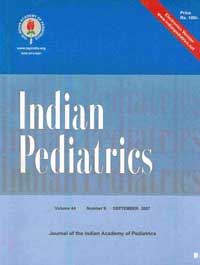|
|
|
Indian Pediatr 2008;45: 961-962 |
 |
Smoking among Youth in East Timor-Leste: What
are the Dynamics? |
|
Robert F Anda and David W Brown
Centers for Disease Control and Prevention, 4770
Buford Highway, NE (MS K67),
Atlanta, Georgia, 30341 USA. E-mail:
[email protected] |
|
In this issue of Indian Pediatrics, Siziya and
colleagues(1) describe the prevalence and correlates of cigarette smoking
among adolescents in Timor-Leste, a country facing the double burden of
communicable and noncommunicable disease. In doing so, the investigators
aim to identify possible factors amenable to intervention to reduce the
high prevalence of smoking (≈40%) among adolescents in Timor-Leste. The
authors note that the close proximity to Indonesia, where smoking
prevalence is also very high (current smoking: prevalence among boys aged
13-15 years, 24% [2006 data]; prevalence among boys and men aged >15
years, 63% [2004])(2), and "prolonged periods of liberation fighting"
within Timor-Leste that displaced popu-lations and damaged the (public)
health infrastructure are potential underlying factors that challenge
efforts to reduce the prevalence of smoking in the country.
The high prevalence of smoking observed among
adolescents, coupled with the recent social unrest and violent conflict
Timor-Leste endured during 1999 following independence from Indonesia and
during 2006 as the result of fighting between pro-government and Falintil
troops, provides an opportunity for further discussions about factors
affecting youth tobacco use.
The lasting effects of violence and social disruption
that the youth of Timor-Leste have endured may well play a role in the
high prevalence of smoking. Mental health problems can be a consequence of
such experiences - and cigarettes are a vehicle for a potent psychoactive
agent (nicotine) that can relieve symptoms of depression and anxiety(3).
Persons with symptoms of depression are more likely to be smokers and,
when followed up over time, are less likely to quit(4). The use of
cigarettes by the youth of Timor-Leste thus may reflect the conscious or
unconscious use of nicotine to regulate disturbances in affect that
accompany exposure to violence.
Exposure to traumatic stress during childhood (adverse
childhood experiences) has been shown to have an important relationship to
smoking. As the number of adverse childhood experiences increases, the
likelihood of becoming a regular smoker by age 14 increases, as does the
risk of continuing to smoke into adulthood(5). Therefore, persons exposed
to adverse childhood experiences may benefit from using nicotine to
regulate their mood(3,5). For such persons, attempts to quit may remove
nicotine as their pharmacologic coping device for the negative emotional,
neurobiological, and social effects of adverse childhood experiences. That
is to say, nicotine appears to be a sufficiently effective psychoactive
agent that unconscious selection of its use could occur in situations of
acute and chronic traumatic stress, such as has occurred in
Timor-Leste(3-5).
The public health problem of smoking in Timor-Leste is
complex and requires broad-based understanding of several major factors
that influence the use of cigarettes. The counterintuitive finding that
youth reporting the highest exposure to anti-tobacco messages had higher
prevalences of smoking is puzzling. However, these same youth may also
have been more likely to have been exposed to greater peer pressure and to
more of the marketing practices of the tobacco industry(6). Before
concluding that anti-smoking messages may have had unintended
consequences, investigators need to take a deeper look into confounding
factors that may explain this finding.
Anti-smoking campaigns need to be strengthened and
sustained. Furthermore, problems with affect regulation, socialization,
and self-esteem may make the youth of Timor-Leste more likely to respond
to the marketing of cigarettes by experimenting with cigarettes and
becoming regular smokers. Insight into the basic underlying factors that
lead to smoking during adolescence and adulthood, whether they be
depression, anxiety, or social and developmental impairments, is needed.
Use of nicotine by youth whose mental health and sense of well-being have
been disrupted by adverse childhood experiences, including violence and
social unrest, needs to be addressed.
Anti-smoking campaigns should be augmented by services
that help the youth of Timor-Leste overcome the effects of traumatic
stress for which the use of psychoactive substances such as nicotine may
be a natural consequence. Understanding the burden of smoking and
potential linkages with childhood exposure to violence and traumatic
stress is a challenge, owing to inadequate data in this emerging field of
inquiry. Investment is needed in information systems for monitoring trends
in smoking, traumatic stressors such as adverse childhood experiences, and
other root causes of chronic diseases(7).
Funding: None.
Competing interests: None stated.
Disclaimer: The findings and conclusions in this
report are those of the authors and do not necessarily represent the
official position of the Centers for Disease Control and Prevention.
References
1. Siziya S, Muula AS, Rudatsikira E. Prevalence and
correlates of current cigarette smoking among in-school adolescents in
East Timor-Leste. Indian Pediatr 2008; 45: 963-968.
2. World Health Organization. WHO Report on the Global
Tobacco Epidemic, 2008. Geneva, Switzerland: WHO Press; 2008.
3. Anda RF, Williamson DF, Escobedo lG, Mast EE,
Giovino GA, Remington Pl. Depression and the dynamics of smoking: a
national perspective. JAMA 1990; 264: 1541-1545.
4. Pomerlau OF, Pomerlau CS. Neuroregulators and the
reinforcement of smoking: towards a biobehavioral explanation. Neurosci
Biobehav Rev 1984; 8: 503-513.
5. Anda RF, Croft JB, Felitti VJ, Nordenberg D, Giles
WH, Williamson DF, et al. Adverse childhood experiences and smoking
during adolescence and adulthood. JAMA 1999; 282: 1652-1658.
6. Pollay R, Siddarth S, Siegel M, Haddix A, Merritt
RK, Giovino GA, et al. The last straw? Cigarette advertising and
realized market shares among youths and adults. 1979-1993. J Marketing
1996; 60: 1-16.
7. Anda RF, Brown DW. Root causes and organic budgeting: funding health
from conception to the grave. Pediatr Health 2007; 1: 141-143. |
|
|
 |
|

